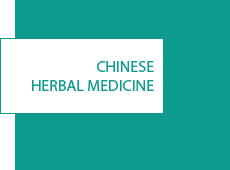Traditional Chinese Medicine (TCM)is one of the oldest medical treatment systems in the world. The surviving medical literature stretches back almost 2,500 years. Currently about one quarter of the world's population utilizes Traditional Chinese Medicine. Traditional Chinese Medicine is a system that includes herbal medicine, acupuncture, moxibustion, cupping, Gua Sha (scrapping), Tui Na (massage) and Shi Liao (dietary therapy).
How Does Chinese Medicine Work?
The concept is to re-establish balance and harmony within the body. In theoretical terms it is thought to be between Yin and Yang, Energy and Blood, between the organs themselves and body fluids. This balance is re-established by supporting the body's healthy energy or defensive energy and attacking any unhealthy or perverse energy.
How do you know there is something not balanced in the body?
In Chinese Medicine the practitioner uses four basic examinations to evaluate balance in the body. First the practitioner asks questions about one's signs and symptoms, medical history, and their disease. Second, they visually inspect a person's face, body, and most importantly their tongue. The tongue can show a change in coating, colour, shape, etc. and that provides a great deal of information on the body's balance. Third, the practitioner listens to the voice and sound of the breath. And finally the fourth step is to measure palpations at various parts of the body. The pulse, which is a significant part of this palpation, is taken at both wrists. It can provide great detail on how the body's energy is functioning and where the imbalances are located.
How does Chinese Medicine re-balance people?
Patterns of imbalance can be established by examining the entire person. These patterns of imbalance can be rectified through the use of acupuncture, herbal medicine, dietary advice, Tui Na etc. These modalities are used to re-balance the body so that the body can heal itself. Chinese Herbal Medicine is considered the premiere medical treatment in China today and is the one most often chosen by hospitals in mainland China.
What is Chinese Medicine good for?
Chinese Medicine is a complete system of medicine that includes treatments for a wide and full range of acute, chronic, traumatic, infectious, and internally generated diseases. However if a disease is extremely virulent or very advanced, Chinese Medicine by itself may be too slow for successful treatment and may require a combination of Allopathic and Chinese Medicine for more effective results.
Chinese medicine is successfully used for a very wide range of conditions. Among the more commonly treated disorders are:
- Skin disease, including eczema, psoriasis, acne, rosacea, urticaria
- Gastro-intestinal disorders, including irritable bowel syndrome, chronic constipation, ulcerative colitis
- Gynaecological conditions, including pre-menstrual syndrome and dysmenorrhoea, endometriosis, infertility
- Hepatitis and HIV: some promising results have been obtained for treatment of Hepatitis C. Supportive treatments may be beneficial for HIV
- Chronic fatigue syndromes, whether with a background of viral infection or in other situations
- Respiratory conditions, including asthma, bronchitis, and chronic coughs, allergic and perennial rhinitis and sinusitis
- Rheumatological conditions (e.g. osteoarthritis and rheumatoid arthritis)
- Urinary conditions including chronic cystitis
- Diabetes, including treatment and prevention
- Psychological problems (e.g. depression, anxiety)
Are herbs safe?
Chinese herbal medicines are very safe when prescribed correctly by a properly trained practitioner. Over the centuries doctors have compiled detailed information about the pharmacopoeia and placed great emphasis on the protection of the patient.
If you would like more information about Traditional Chinese Medicine or to schedule an appointment, please call us at (905) 294-1990. We will be happy to answer any questions that you may have.





